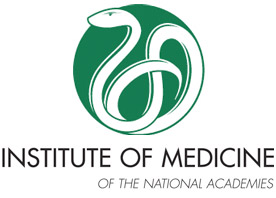Report on Public Health and Health Care
The Institute of Medicine (IOM) has published a report summarizing its February workshop that explored the relationship between public health and health care.
According to the IOM, the workshop
 … was designed to discuss and describe the elements of successful collaboration between health care and public health organizations and professionals; reflect on the five principles of primary care–public health integration (which can be applied more broadly to the health care–public health relationship): shared goals, community engagement, aligned leadership, sustainability, and data and analysis; and explore the “elephants in the room” when public health and health care interact: what are the key challenges and obstacles and what are some potential solutions, including strengths both sides bring to the table. The workshop presentations reflected on collaboration in four contexts: payment reform, the Million Hearts initiative, hospital – public health collaboration, and asthma control.
… was designed to discuss and describe the elements of successful collaboration between health care and public health organizations and professionals; reflect on the five principles of primary care–public health integration (which can be applied more broadly to the health care–public health relationship): shared goals, community engagement, aligned leadership, sustainability, and data and analysis; and explore the “elephants in the room” when public health and health care interact: what are the key challenges and obstacles and what are some potential solutions, including strengths both sides bring to the table. The workshop presentations reflected on collaboration in four contexts: payment reform, the Million Hearts initiative, hospital – public health collaboration, and asthma control.
Because of the nature of the communities they serve and the work they do, Pennsylvania safety-net hospitals are often important parts of public health efforts throughout the commonwealth.
Find the IOM report Collaboration between Health Care and Public Health: Workshop Summary here.